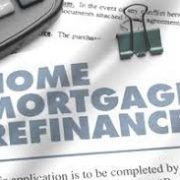Finding Re-Finance Information
Homeowners who are considering re-financing but are not knowledgeable about the subject have a number of options available to them for finding more accurate information regarding the types of re-financing options available as well as the ways to obtain the best available rates and tips for finding a reputable lender. This information can be obtained through a number of resources including published books, Internet websites and conversations with experts in the financial industry who specialize in the area of re-financing. All of these sources can be very helpful but there are also precautions homeowners must take when using each information source. Taking these precautions will help to ensure the homeowner is receiving accurate information.
Using Books for Research
Published books are often considered to be one of the most reliable resources for researching re-financing options. However, not all books on the subject are created useful. Readers may find some books provide a great deal of useful, current information while others books are filled with outdated information and information which is not 100% accurate.
The best way to select a book or books when researching the subject of re-financing is to start the search with books that were only recently published. This is important because the financial industry is continually evolving and as a result books which were published only a few years ago may already be considered out of date.
Homeowners should also seek out independent reviews when considering books on the subject of re-financing. This is important because books which consistently receive solid reviews from consumers are likely to be worthwhile. Conversely books which consistently receive negative reviews are likely to not be worthwhile. Homeowners should seek out highly recommended books while avoiding those that are not highly recommended. This may prevent the homeowner from wasting time reading books which are not informative and may even be inaccurate.
Using the Internet for Research
The Internet is another resource which can be very valuable for homeowners who are considering re-financing their home. The Internet is filled with valuable information but there is also a great deal of misinformation floating around on the Internet. Homeowners who are completely uninformed about the re-financing process may not be able to distinguish between the useful information and the misinformation. As a result these homeowners may be led astray by inaccurate information on the Internet. Homeowners who wish to avoid the potential for this problem should consider verifying the information they find online through an outside source such as a published book from a renowned author or by conferring with an expert in the subject of re-financing.
Homeowners should also do the majority of their research on well established websites. This includes websites owned and operated by major lenders which have been in business for years. The information on these websites is likely to be much more up to date and accurate than websites which are created for profit by website owners.
Consulting with Re-Financing Experts
Finally, consulting with financial experts who specializes in re-financing can be very helpful for homeowners who are considering re-financing. This might be the most expensive option as many of these experts will likely charge a fee for their services but it can also be the most reliable source of information.
There are a number of advantages to consulting with an industry professional as opposed to researching the subject independently through published resources. The most significant advantage is the ability to ask questions throughout the re-financing process. This will help to ensure the homeowner fully understands the available options. It will also help to ensure the homeowner receives the best possible re-financing option for his specific needs. The re-financing process works best when the homeowner offers their input about the type of re-financing they are seeking as well as the benefits they hope to obtain through re-financing. The re-financing expert can than make a better recommendation which will suit the homeowner’s needs.
What is equity, and how much do you have?
Equity is essentially the difference between the current value of your property and the amount you owe on your mortgage principal. To put it another way, the equity in your home is how much of your property that you own for yourself, and not your mortgage lender.
You can find your level of equity using the following basic formula:
Equity = property value – amount owing on your mortgage principal
Keep in mind that your property value isn’t just the price you paid when you bought the place – it also includes any capital gains from making improvements to the property, or from increased demand in your local area.
How can you use your equity to refinance?
There are a few ways that your equity can be used, depending on your refinancing goal. Generally, your equity will play a similar role to that of your deposit when you first took out your home loan – providing security and reducing the lender’s financial risk.
If you’re refinancing your existing loan to lower your interest rate, whether so you can enjoy more affordable mortgage repayments, or so you can pay back your loan’s principal more quickly, the more equity you have available in your mortgage, the more security you’ll offer your lender, and the lower an interest rate you’re likely to receive. You may also qualify for loans with access to useful features such as offset accounts and redraw facilities, which can provide further flexibility and options for managing your finances.
Example:
Jacob considers refinancing his home loan by switching to another lender with a lower interest rate. Because he has more than $120,000 in equity available (the minimum 20% deposit required to avoid paying Lender’s Mortgage Insurance), he qualifies for one of his new lender’s low-interest loans with an offset account and a redraw facility, so he can enjoy greater flexibility from his personal finances.
If you’re refinancing in order to borrow more money, such as when you want to upgrade to a bigger house, the equity in your current home loan can serve as the deposit on a new home loan, with all of the same requirements.
Keep in mind that a new home loan comes with new fees, charges and expenses such as stamp duty, which often average to around 5% of the purchase price. Take this into account when estimating what you may be able to afford.
Example:
Jacob considers selling his current place and buying a new one in a better area, which will require refinancing his mortgage and borrowing more money.
With $300,000 in equity available, and assuming that his new loan will require a minimum 20% deposit to avoid Lender’s Mortgage Insurance (LMI), Jacob could theoretically buy a place worth up to $1.5 million… assuming he can afford the repayments and the costs of refinancing!
To hopefully keep his finances more manageable, Jacob instead looks at homes worth up to $1.2 million, using $240,000 of his equity as a deposit and keeping the remaining $60,000 available to cover the other costs.
It’s also possible to keep your current home loan and property, and to use your equity to fund the purchase an investment property. However, in this case, you likely won’t be able to put all of the equity in your current loan towards taking out a new one – many lenders require you to maintain a minimum Loan to Value Ratio (LVR) in your mortgage to help limit the financial risk involved. You’ll need to take LVR into consideration when determining the amount of usable equity in your home.
Example:
Another option for Jacob is to use the equity in his home to take out a second mortgage to purchase an investment property. Because Jacob’s lender requires that he maintains a minimum LVR of 80%, his property value for determining his usable equity effectively becomes $480,000 ($600,000 – 20%). This in turn means that Jacob’s usable equity is only $180,000, rather than the original $300,000 figure.
Assuming Jacob’s second mortgage requires a 20% deposit to avoid LMI, he could potentially buy an investment property valued at up to $900,000, but it may be more affordable to look at $720,000 properties, using $144,000 as the deposit and keeping $36,000 to cover the other expenses involved.
Another option is to take out a home equity loan, also known as a line of credit, where you borrow money from your lender using the equity in your home loan as collateral. This line of credit could be used to finance a home renovation, to buy a new car, or to pay for a dream holiday.
Much like the previous investment property example, you may be limited on how much you can borrow in a home equity loan, as your lender may require you to keep a certain percentage of your home’s value invested in the property in order to secure the mortgage.
Example:
Another option for Jacob is to use his equity to pay for that big round-the-world trip he’s always wanted to go on. As previously determined, he has $300,000 of equity in his home loan, but only $180,000 of this is usable equity.
By approaching his lender and organising a home equity line of credit, Jacob can set off on his trip, armed with what is effectively a credit card with a $180,000 limit.
ARE YOU THINKING OF RE FINANCING YOUR PROPERTY?
ARE YOU PROPERTY OWNER AND WISH TO PURCHASE INVESTMENT PROPERTY?




